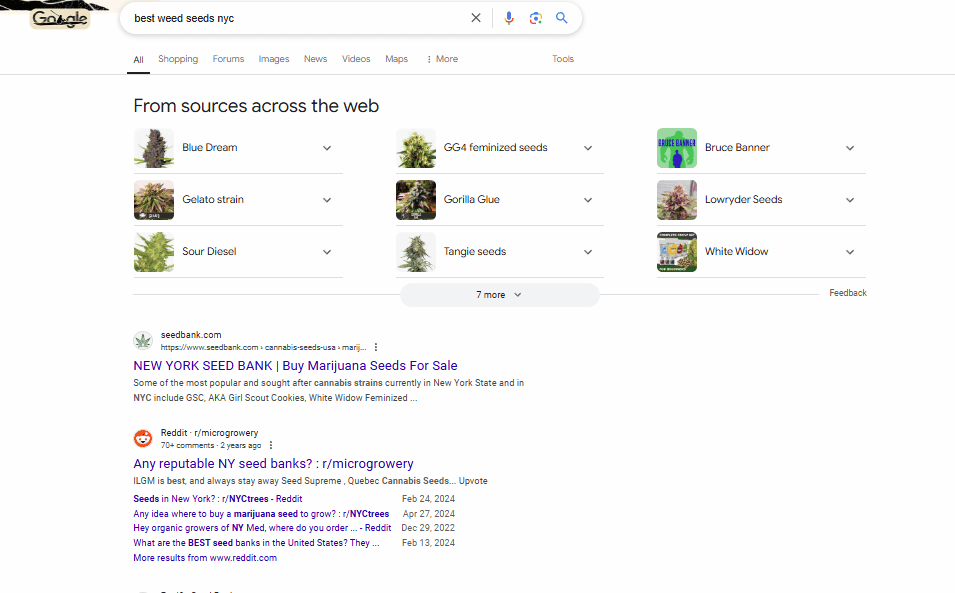Understanding Cannabis Keywords
Keywords play a pivotal role in cannabis SEO. It’s crucial to choose the right ones to enhance visibility and attract the target audience.
Weed SEO Company specializes in SEO for the marijuana industry. We help marijuana & CBD businesses grow. Book a call today!
Importance of Keyword Relevance
Relevance should be the primary focus when identifying keywords. Relevant keywords are those that align closely with the products or services offered. Aim for keywords that are seeing an increase in searches as they can directly impact performance (NisonCo). Ensuring the keywords are trending and relevant helps in effectively reaching the audience.
Tables can help illustrate keyword relevance and search trends over time:
| Keyword | Monthly Searches | Trend Increase (%) |
|---|---|---|
| CBD Oil | 50,000 | +10% |
| Cannabis Dispensary Near Me | 30,000 | +15% |
| Best Indica Strains | 10,000 | +8% |
The choice of keywords heavily impacts content relevance, thereby improving rankings and visibility in search engines.

Long-Tail Keywords for Cannabis SEO
Long-tail keywords are essential for cannabis SEO efforts. These are highly specific phrases that users may type into a search engine. Though they have lower search volume, they are more specific and tend to attract a more targeted audience (NisonCo).
Examples of long-tail keywords include:
- “best CBD oil for anxiety”
- “where to buy cannabis seeds online”
- “local dispensaries with delivery service”
Tools like SEMRush or Ubersuggest are invaluable for identifying relevant long-tail keywords (NisonCo). Such tools can help narrow down keywords that are more specific to your brand and audience.
| Long-Tail Keyword | Monthly Searches | Competition Level |
|---|---|---|
| “best CBD oil for anxiety” | 1,200 | Low |
| “where to buy cannabis seeds online” | 800 | Medium |
| “local dispensaries with delivery service” | 500 | Low |
Focusing on long-tail keywords aligns more closely with user search intent, resulting in higher engagement and conversions. For a comprehensive guide, visit how to create a cannabis SEO strategy from scratch and cannabis seo ranking factors: what really matters in 2024.
Incorporating these keywords into both on-page and off-page SEO tactics can significantly improve your digital presence. For additional insights, check out the best cannabis keyword research tools compared and learn how to track performance in how to track cannabis SEO performance.
Search Intent in Cannabis SEO
Recognizing User Intent
Understanding search intent is fundamental to cannabis SEO. By recognizing why people are looking for solutions, you can better identify the products or services they seek. Search intent helps tailor your cannabis keyword research to align with user needs, ensuring you attract the right audience.
At its core, search intent revolves around why a user is making a search. It’s imperative to match your content to this intent; otherwise, potential customers may quickly leave your site, negatively impacting your rankings. To effectively utilize search intent, let’s break down the different types.

Types of Search Intent
There are five common types of search intent: Informational, Navigational, Transactional, Commercial Investigation, and Local Queries.
Informational Intent
Users searching with informational intent are looking for knowledge or answers to specific questions. These searches might include queries like “benefits of CBD oil” or “how to use cannabis edibles.” Your content should provide comprehensive and useful information to satisfy these searches.
| Intent Type | Example Search Queries |
|---|---|
| Informational | “What are the benefits of CBD?”, “How to grow cannabis at home?” |
Navigational Intent
Navigational searches are made when users already know the specific page or website they want to visit. For businesses, ensuring your site is easily navigable will help satisfy this intent. Queries might include brand-specific searches like “Leafly dispensary near me” or “Weedmaps login.”
| Intent Type | Example Search Queries |
|---|---|
| Navigational | “Leafly dispensary”, “Weedmaps help” |
Transactional Intent
Transactional intent is evident when users are looking to make a purchase. These users are ready to buy and are searching for specific products or services. For example, queries like “buy cannabis oil online” or “order recreational marijuana.”
| Intent Type | Example Search Queries |
|---|---|
| Transactional | “Buy CBD oil”, “Order recreational marijuana” |
Commercial Investigation
These queries represent users who are in the decision-making process. They’re researching products or services but haven’t made a final decision yet. These searches might include comparisons or reviews like “best cannabis strains for pain” or “top-rated CBD drops.”
| Intent Type | Example Search Queries |
|---|---|
| Commercial Investigation | “Best cannabis strains for pain”, “CBD drops reviews” |
Local Queries
Local intent searches are focused on finding products or services within a specific area. These are particularly important for dispensaries. For example, users may search “dispensaries near me” or “cannabis delivery in Denver.”
| Intent Type | Example Search Queries |
|---|---|
| Local Queries | “Dispensaries near me”, “Cannabis delivery in Denver” |
The primary goal is to align your SEO strategy with these search intents to meet users’ needs effectively. This not only improves user experience but also boosts your site’s relevance and authority in search engine rankings.
For more on creating a strong cannabis SEO strategy, check out our guide on how to create a cannabis SEO strategy from scratch, and learn about the importance of understanding various cannabis SEO ranking factors.
Effective Keyword Research Strategies
Effective keyword research is critical for maximizing your visibility in the cannabis industry. Here, I will walk you through three essential strategies: Competitor Analysis, Leveraging Keyword Tools, and Diversifying Keyword Selection.
Competitor Analysis
Analyzing your competitors can provide significant insights into your own SEO strategy. By understanding what people are saying about other cannabis brands and how they search for them, you can uncover effective keywords and tactics to enhance your own search engine performance (NisonCo). For a detailed look at competitor analysis, check out our cannabis seo audit: complete step-by-step process.
| Competitor | Top Keywords | Search Volume | Keyword Difficulty |
|---|---|---|---|
| Competitor A | Cannabis Edibles | 5000 | Medium |
| Competitor B | CBD Benefits | 4000 | Low |
| Competitor C | THC Oil | 3000 | High |
Leveraging Keyword Tools
Using keyword tools can help identify long-tail keywords, which are highly specific and more relevant to your brand. While these keywords may have lower search volumes, they are often less competitive and can drive more targeted traffic to your website (NisonCo). Tools like SEMRush, Ubersuggest, Google Keyword Planner, and Ahrefs are invaluable for uncovering these terms. Visit our page on best cannabis keyword research tools compared for an in-depth review of these tools.
Diversifying Keyword Selection
Diversifying your keyword selection is essential for a well-rounded SEO strategy. Begin by brainstorming a list of topics relevant to your business and consider your audience’s search behavior. Focus on high-volume, low-competition keywords to maximize visibility (Twibi Agency). Analyzing competitors’ keywords can reveal hidden opportunities and provide additional insights. For more on this topic, explore our guide on how to create a cannabis seo strategy from scratch.
| Keyword Category | Example Keywords | Search Volume | Competition Level |
|---|---|---|---|
| Edibles | Best Cannabis Edibles, CBD Gummies | 5000 | Low |
| Benefits | Health Benefits of CBD, THC Effects | 4000 | Medium |
| Oils | Buying THC Oil, CBD Oil near Me | 3000 | High |
By employing these strategies, you will be better equipped to navigate the competitive landscape of cannabis SEO. Remember, effective keyword research involves continual refinement and adaptation to stay ahead in this ever-evolving industry. For further reading, check out our complete guide to cannabis marketing and seo (2024).
Optimizing SEO for Cannabis Industry
In the rapidly growing cannabis industry, effective SEO strategies are critical for standing out. Let’s delve into the nuances of utilizing visual media for engagement and implementing location-based SEO tactics.
Visual Media for Engagement
If your brand thrives on visuals, incorporating media such as images and videos can significantly boost engagement and improve SEO. Using platforms like YouTube can extend your reach beyond textual content (NisonCo).
Videos, whether product demonstrations, informational pieces, or customer testimonials, can captivate your audience and keep them on your site longer, which is a positive signal to search engines.
Here are some tips for leveraging visual media:
- Optimize Images: Ensure that all images are optimized for faster load times. Compress files without losing quality and use descriptive ALT tags.
- Video Content: Share informative or entertaining videos related to cannabis; embed these videos on your website to enhance on-site engagement.
- Infographics: Create visually appealing infographics to summarize important information and encourage social sharing.
Slow-loading sites can drive users away, impacting your SEO negatively (LinkedIn). Focus on optimizing site speed by implementing browser caching and optimizing site files. For detailed guidance, refer to our technical seo checklist for dispensary websites.
Location-Based SEO Strategies
Optimizing for local searches is essential for cannabis dispensaries aiming to attract nearby customers. Local SEO can significantly boost your visibility to users searching for specific services in your vicinity (Avalanche Creative).
Here are key elements to focus on:
- Google My Business: Set up and optimize your Google My Business profile. Include accurate information about your business, such as address, hours, and contact details. Encourage satisfied customers to leave reviews.
- Local Keywords: Use location-based keywords in your content and meta tags. For example, “best cannabis dispensary in Denver” can help attract local traffic.
- Obtaining Reviews: Positive reviews can enhance your local SEO efforts. Encourage happy customers to leave reviews on Google and other local directories.
Below is a table summarizing effective location-based SEO tactics:
| Tactic | Effect on SEO |
|---|---|
| Google My Business | Improves local visibility |
| Local Keywords | Attracts local traffic |
| Customer Reviews | Enhances credibility and search rankings |
For a more comprehensive guide, visit our article on local seo for dispensaries: step-by-step implementation guide.
By combining visual media with location-based SEO tactics, you can create a robust strategy that caters to both broader and local audiences. Keep experimenting and optimizing to stay ahead in the competitive cannabis market, and don’t forget to check out our cannabis seo ranking factors: what really matters in 2024.
Professional Help and Budget Allocation
Navigating the world of cannabis SEO can be overwhelming, especially when it comes to finding those elusive low-competition terms. Hiring professionals can make a significant difference in your search engine optimization efforts and overall business success.
Importance of SEO Professionals
SEO professionals who specialize in the cannabis industry bring a wealth of knowledge and expertise to your marketing strategy. They understand the unique challenges and opportunities within this niche market, ensuring your website is optimized for both search engines and your target audience. According to Latched Agency, hiring cannabis SEO experts can optimize your keyword strategy and content marketing, which leads to increased search traffic and business success.
Here’s why it’s beneficial to hire cannabis SEO professionals:
- Specialized Knowledge: They are familiar with the latest trends, regulations, and best practices specific to the cannabis market.
- Advanced Keyword Research: They use sophisticated tools and techniques to identify high-traffic, low-competition keywords (best cannabis keyword research tools compared).
- Content Expertise: They can create SEO-friendly cannabis content that resonates with your audience.
- Technical SEO: They ensure your website’s technical elements are optimized.
Allocated Marketing Budget
Determining how much to allocate to your SEO efforts is crucial for achieving the best ROI. Generally, brands in the cannabis industry allocate 3-9% of their annual sales to marketing efforts (Big Sea). Effective strategies and targeted campaigns can make even smaller budgets highly effective.
To give you a better sense of how much you might need to invest, here is a rough breakdown:
| Annual Sales | Marketing Budget (3%) | Marketing Budget (9%) |
|---|---|---|
| $100,000 | $3,000 | $9,000 |
| $250,000 | $7,500 | $22,500 |
| $500,000 | $15,000 | $45,000 |
| $1,000,000 | $30,000 | $90,000 |
Source: Big Sea
When planning your budget, consider the following elements:
- SEO Tools: Investing in the best SEO tools for cannabis businesses can provide valuable insights and analytics.
- Content Creation: High-quality content is essential for effective SEO (cannabis industry content calendar template).
- Local SEO: Optimize your presence with local SEO strategies.
- Link Building: Building a robust link-building strategy can greatly improve your site’s authority and search rankings.
- Professional Fees: Budget for hiring SEO professionals who can manage your campaigns and continuously improve your strategy.
Investing in professional SEO services and carefully planning your budget can yield higher conversion rates and increased revenue (LinkedIn). For more detailed guidance, consider exploring our complete guide to cannabis marketing and SEO (2024).
The Booming Cannabis Industry
For cannabis business owners, understanding the industry’s rapid growth and the strategies to build solid customer relationships is essential. This section will delve into the impressive growth projections and the importance of fostering connections with your customers.
Growth Projections
The cannabis industry is experiencing unprecedented growth, with global sales projected to reach $55 billion by 2027 (Big Sea). This significant growth presents an array of opportunities for businesses in the sector. However, it also comes with challenges, including fierce competition and evolving regulations.
To illustrate the growth trajectory, here’s a table summarizing the projected sales:
| Year | Projected Sales (Billion USD) |
|---|---|
| 2023 | 20 |
| 2025 | 40 |
| 2027 | 55 |
This booming market requires businesses to stay nimble and adaptable. Implementing effective cannabis SEO strategies is crucial to standing out in such a competitive landscape. Companies should consider leveraging local SEO for dispensaries and focusing on highly relevant yet low-competition keywords to maximize their online visibility.
Building Customer Relationships
In the rapidly growing cannabis market, building genuine relationships with customers is more important than ever. Brands that prioritize customer trust and engagement are more likely to succeed.
Here are some tips for building strong customer relationships:
- Transparency: Provide clear and accurate information about your products. Adhering to Google’s guidelines for cannabis websites can help maintain compliance and build trust.
- Community Engagement: Participate in local events and online forums. Create a content calendar to keep your audience informed and engaged with relevant content.
- Customer Feedback: Listen to your customers’ needs and preferences. Use data from your SEO performance tracking to tailor your offerings and improve their experience.
- Personalization: Utilize data to create personalized marketing strategies. Incorporate information from cannabis SEO case studies to understand what works best in customer engagement.
By implementing these strategies, businesses can build lasting relationships with their customers and thrive in the competitive cannabis market. Incorporating relevant cannabis keyword research tools to find low-competition terms will further enhance your SEO efforts and connect you with your target audience more effectively. For a comprehensive approach, refer to our complete guide to cannabis marketing and SEO (2024).
Niche Demographics in Cannabis Marketing
Understanding niche demographics is essential for crafting an effective cannabis keyword research strategy. By tailoring messaging to specific groups, cannabis businesses can attract the right customers and enhance their SEO performance.
Targeted Messaging
Segmenting audiences by their unique preferences and needs enables more precise targeting. For example, seniors seeking pain relief and millennials interested in microdosing are two distinct groups (Big Sea). Leveraging these insights helps create content that resonates at a deeper level.
When it comes to cannabis keyword research, utilizing long-tail keywords can be particularly effective. These keywords are highly specific and less competitive, allowing businesses to rank better on search engine results pages (SERPs). Long-tail keywords also tend to attract more qualified traffic, which is more likely to convert.
For example, if targeting seniors, relevant long-tail keywords might include:
- “best CBD oil for arthritis pain”
- “THC products for chronic pain relief”
- “cannabis for senior wellness”
For millennials, consider:
- “microdosing THC benefits”
- “best cannabis strains for creativity”
- “safe cannabis use for millennials”
Tailoring to Demographics
Crafting content that speaks directly to specific demographics increases engagement. Tailoring messaging for niche groups involves understanding their unique preferences, challenges, and goals. This allows for more authentic and compelling communication.
To illustrate, here’s how these two demographics might differ:
| Demographics | Interests | Preferred Messaging | Popular Keywords |
|---|---|---|---|
| Seniors | Pain relief, wellness | Educational, Trustworthy | “CBD for seniors”, “cannabis for pain management” |
| Millennials | Microdosing, creativity | Trendy, Informative | “microdosing THC”, “cannabis and creativity” |
Crafting content that incorporates these targeted keywords can significantly enhance a cannabis business’s SEO strategy. It’s important to diversify your keyword selection to cover a range of potential search terms effectively. Explore further on how to create a cannabis seo strategy from scratch to build a robust strategy tailored to your audience.
By leveraging niche demographics and targeted messaging, cannabis businesses can navigate the competitive landscape more effectively and build stronger connections with their audience. For more insights into technical aspects, check out our technical seo checklist for dispensary websites.
The Role of Seed Keywords
Seed keywords form the backbone of any successful keyword research strategy. These core terms set the stage for a focused SEO plan that targets relevant traffic for cannabis businesses.

Creating Seed Keywords
To effectively create seed keywords, start by analyzing the main categories of your website. Each section can act as a seed keyword representing core areas of your service.
For example:
- Products: “CBD oil,” “THC gummies”
- Services: “cannabis delivery,” “dispensary near me”
- Educational Content: “cannabis benefits,” “how to use CBD”
Seed keywords are usually short and broad, generally one or two words. These keywords act as the starting points for more in-depth research, ultimately leading to a well-rounded keyword strategy.
Common Seed Keywords in Cannabis Industry
| Main Category | Seed Keyword Example |
|---|---|
| Products | “CBD oil” |
| Services | “cannabis delivery” |
| Education | “cannabis benefits” |
Using tools like Google Search Console and online forums can also help uncover valuable seed keywords. These platforms offer insights into search queries and user behaviors, aiding in the identification of foundational terms (Outreach Monks).
Competitor Analysis for Seed Keywords
Competitor analysis is crucial for discovering effective seed keywords. By examining what keywords your competitors are ranking for, you can identify strong seed keywords to refine your own SEO strategy.
Steps for Competitor Analysis:
- Identify Competitors: List the main competitors in your niche.
- Use Keyword Tools: Tools like SEMrush or Ahrefs can help in scraping competitor keywords.
- Analyze Competitor Content: Look at the titles, headings, and meta descriptions used by competitors.
Example of Competitor Analysis
| Competitor | Seed Keywords | Tool Used |
|---|---|---|
| Competitor A | “best THC gummies,” “organic CBD oil” | Ahrefs |
| Competitor B | “cannabis dispensary,” “CBD benefits” | SEMrush |
Analyzing competitors helps you identify what works well in the market and enables you to target those seed keywords effectively. For more on refining your keyword strategy, explore our guide on how to create a cannabis SEO strategy from scratch.
Combining these seed keywords with your core cannabis terms can give you a strong foundation to build a targeted and effective SEO strategy. Seed keywords ensure that your digital marketing efforts drive relevant, high-quality traffic to your site.

FAQ: Low-Competition Cannabis Keywords – Full Lists for Each Niche
1. What are low-competition cannabis keywords?
Low-competition cannabis keywords are search terms with high search volume but relatively few competing websites. Targeting these keywords can help cannabis businesses rank higher in search results, attracting more organic traffic.
2. Why should cannabis businesses focus on low-competition keywords?
Focusing on low-competition keywords allows cannabis businesses to achieve higher search rankings more easily, leading to increased visibility and attracting a more targeted audience.
3. How can I identify low-competition cannabis keywords?
Utilize keyword research tools like Google Keyword Planner, SEMrush, or Ahrefs to find keywords with high search volume and low competition. Look for long-tail keywords and niche-specific terms that are less competitive.
4. Can you provide examples of low-competition cannabis keywords?
Examples include specific product names, local dispensary searches, or unique cannabis strains. For instance, “organic CBD oil for sleep” may have lower competition compared to broader terms like “CBD oil.”
5. How do long-tail keywords benefit cannabis SEO?
Long-tail keywords are more specific and less competitive, making it easier to rank higher in search results. They also attract users with clear intent, leading to higher conversion rates.
6. Are there tools specifically for cannabis keyword research?
While general SEO tools are effective, some platforms specialize in cannabis SEO, offering tailored keyword suggestions and insights. For example, NisonCo provides cannabis-specific SEO keyword lists.
7. How often should I update my list of low-competition keywords?
Regularly updating your keyword list, at least quarterly, ensures you stay ahead of market trends and maintain a competitive edge in the cannabis industry.
8. Can low-competition keywords improve my website’s SEO ranking?
Yes, targeting low-competition keywords can enhance your website’s SEO ranking by allowing you to rank higher with less effort, thereby increasing organic traffic.
9. How do I incorporate low-competition keywords into my content?
Integrate these keywords naturally into your website’s content, including product descriptions, blog posts, and meta tags, to improve relevance and search engine visibility.
10. What role do local keywords play in cannabis SEO?
Local keywords help attract customers in your vicinity. For example, “best dispensary in Iztapalapa” targets users searching for cannabis products in your specific location, enhancing local SEO efforts.
